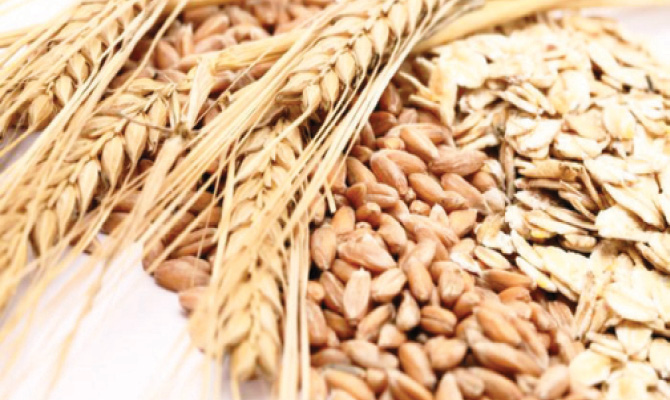What’s the big deal about whole grains?
Some behaviours are important: drink enough water, get enough sleep, eat fresh fruits and vegetables. We understand why these three may be. But there is a fourth that’s less understood: eat whole grains. Studies have demonstrated a raft of benefits associated with consuming higher levels of whole grains; they seem to protect against chronic diseases […]

Some behaviours are important: drink enough water, get enough sleep, eat fresh fruits and vegetables. We understand why these three may be.
But there is a fourth that’s less understood: eat whole grains.
Studies have demonstrated a raft of benefits associated with consuming higher levels of whole grains; they seem to protect against chronic diseases and reduce the risk of all-cause mortality.
Diets that are rich in whole grains have also been shown to reduce risk factors related to diseases of the heart and blood vessels and help maintain a healthy weight.
Scientists at University of Eastern Finland in Kuopio are getting to the bottom of the molecular mechanisms behind whole grains’ health benefits.
“Whole grains are one of the healthiest foods there is. For instance, we know that a high intake of whole grains protects against type 2 diabetes and cardiovascular diseases,” says principal investigator Dr. Kati Hanhineva.
“Up until now, however, we haven’t understood the cellular mechanisms through which a whole grain-rich diet impacts our body.”
The recent study looked at the effects of a grain-heavy diet on both mice and humans, and the new findings were published recently in The American Journal of Clinical Nutrition.
After participants had eaten higher levels of whole grains for 12 weeks, the researchers carried out a metabolomics analysis. Metabolomics is the study of chemical processes involving metabolites, which are small molecules formed by and during metabolic processes.
The researchers were particularly interested in betaine, a group of compounds that has a range of biological functions. Whole grains are an important dietary source of betaine compounds, and the researchers had a hunch that they might help explain whole grains’ healthful benefits.
As expected, their analysis demonstrated a significant increase in betaine compounds following the 12-week whole grain diet; this boost in levels was measured in both mice and humans. According to Dr. Hanhineva, “This is the first time many of these betaine compounds were observed in the human body in the first place.”
The investigators discovered a correlation between higher betaine compound levels and improved glucose metabolism. Some of these compounds seemed to be more heavily involved than others.
“Pipecolic acid betaine, for example, is particularly interesting. Increased levels of pipecolic acid betaine after the consumption of whole grains was, among other things, associated with lower post-meal glucose levels,” explains Hanhineva.
In a follow-up experiment, the team tested certain betaine compounds on cells in the laboratory. In particular, they were interested in 5-aminovaleric acid betaine (5-AVAB), which is known to accumulate in particularly active tissues, such as cardiac tissue.
The findings from this part of the study might also prove useful for cardiovascular disease research.
“We observed that 5-AVAB reduces cardiomyocytes’ use of fatty acids as a source of energy by inhibiting the function of a certain cell membrane protein.”
This is interesting because some cardiac drugs have a similar effect. However, the team is cautious to avoid drawing conclusions before further studies are carried out in animals.
But it is important to note the research hasn’t proceeded beyond cell-level experiments yet.
Overall, the findings significantly increase our understanding of the mechanisms involved in whole grains’ health benefits. They also open up new questions that will need answers.
“In the future, we seek to analyze in greater detail the multitude of effects these new compounds can have on the human body,” explains Hanhineva, “we will also look into how intestinal microbes possibly contribute to the formation of these compounds.”
Unraveling the interactions involved in any metabolic pathway is incredibly challenging. It is therefore likely to be some time before we have a clear picture of the impact that betaine compounds have on organs, systems, and diseases.
